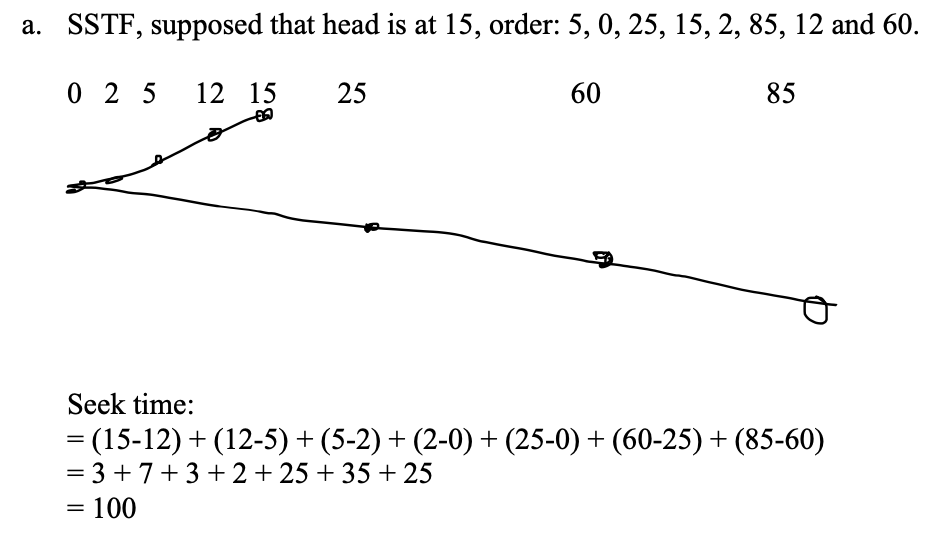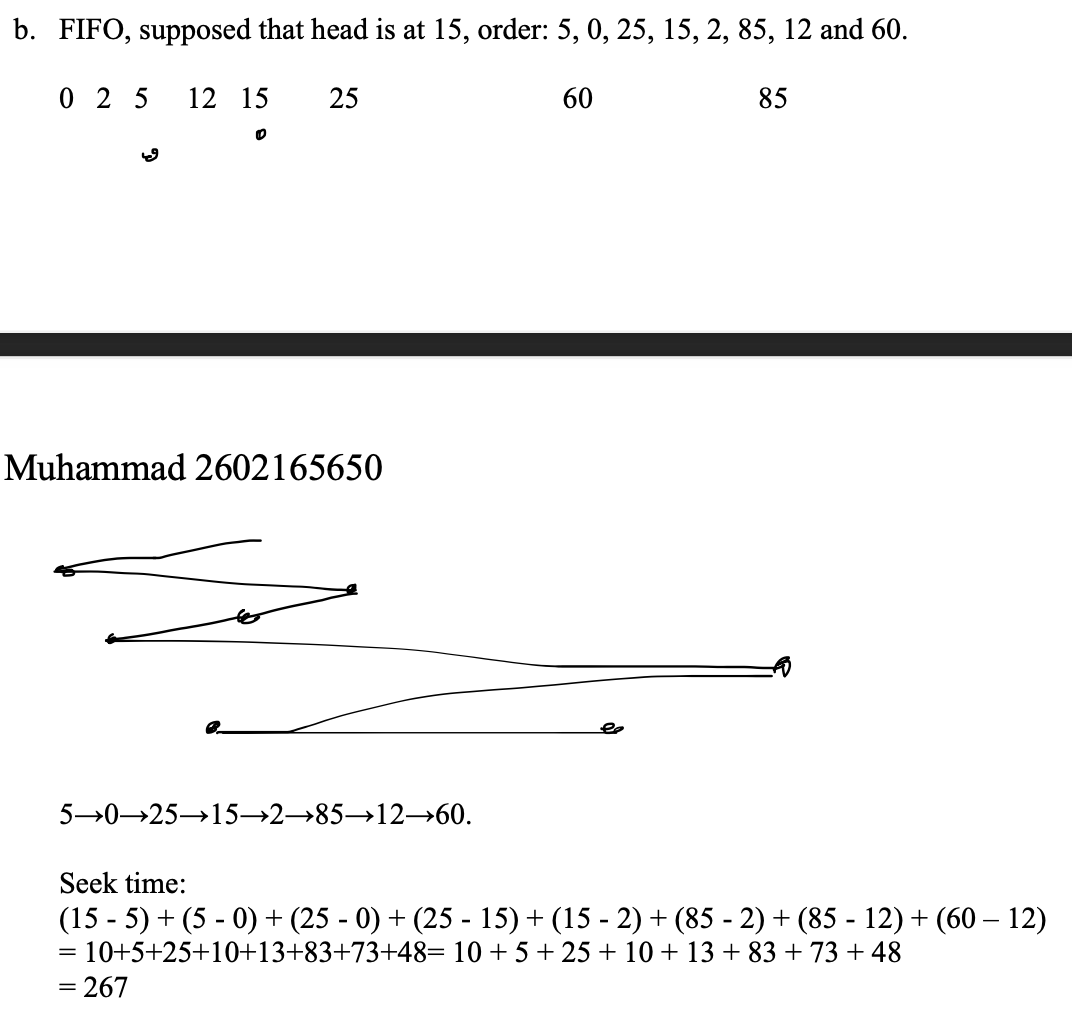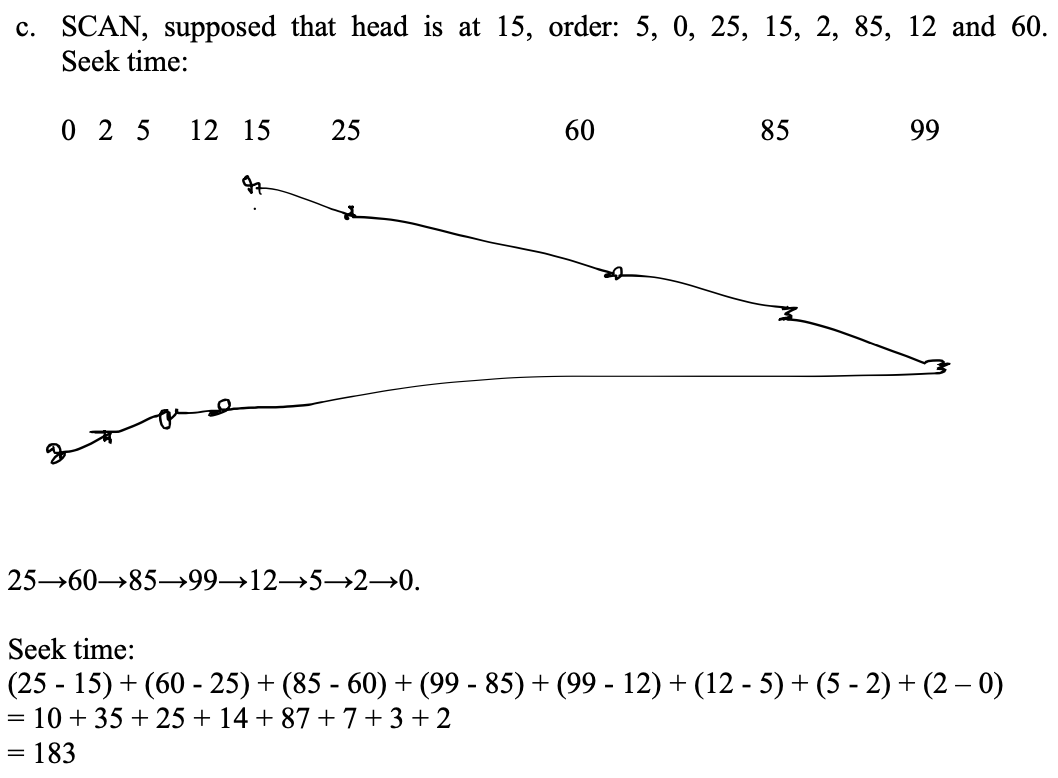Disk Scheduling (Simulation)
- The arrangement of how we access desired cylinders
- Start from the head pointer
FIFO / FCFS
- Using the queue order
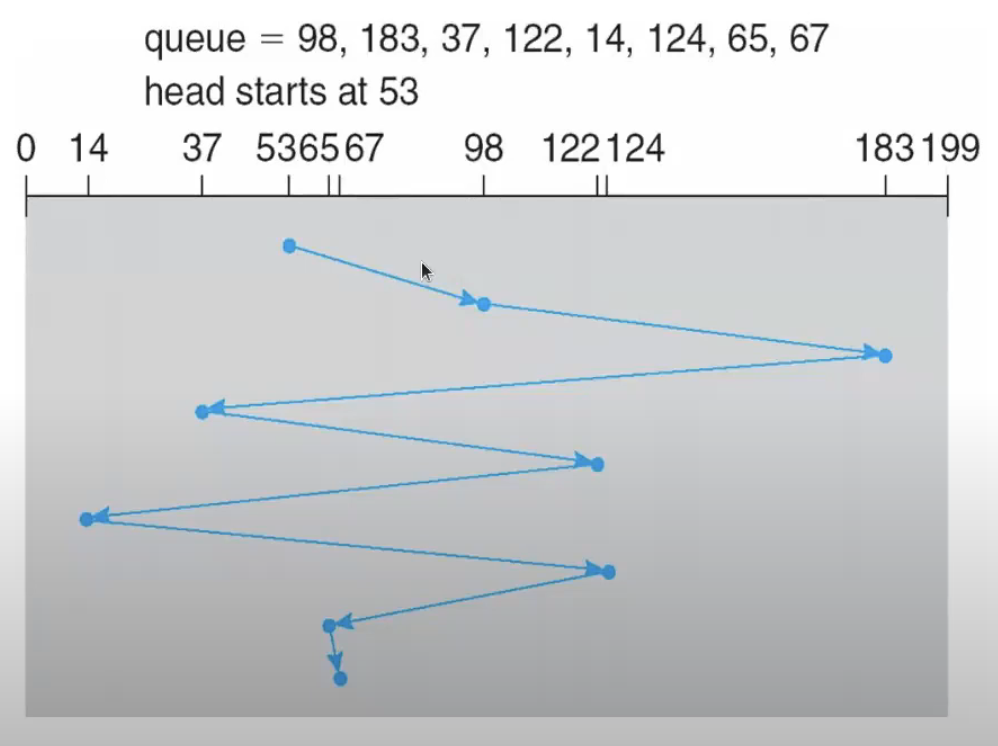
(98-53)+(183-98)+(183-37)+(122-37)+(122-14)+(124-14)+(124-65)+(67-65) = total head movement of 640 cylinders
SSTF (Shorter Seek Time First)
- Find the closest
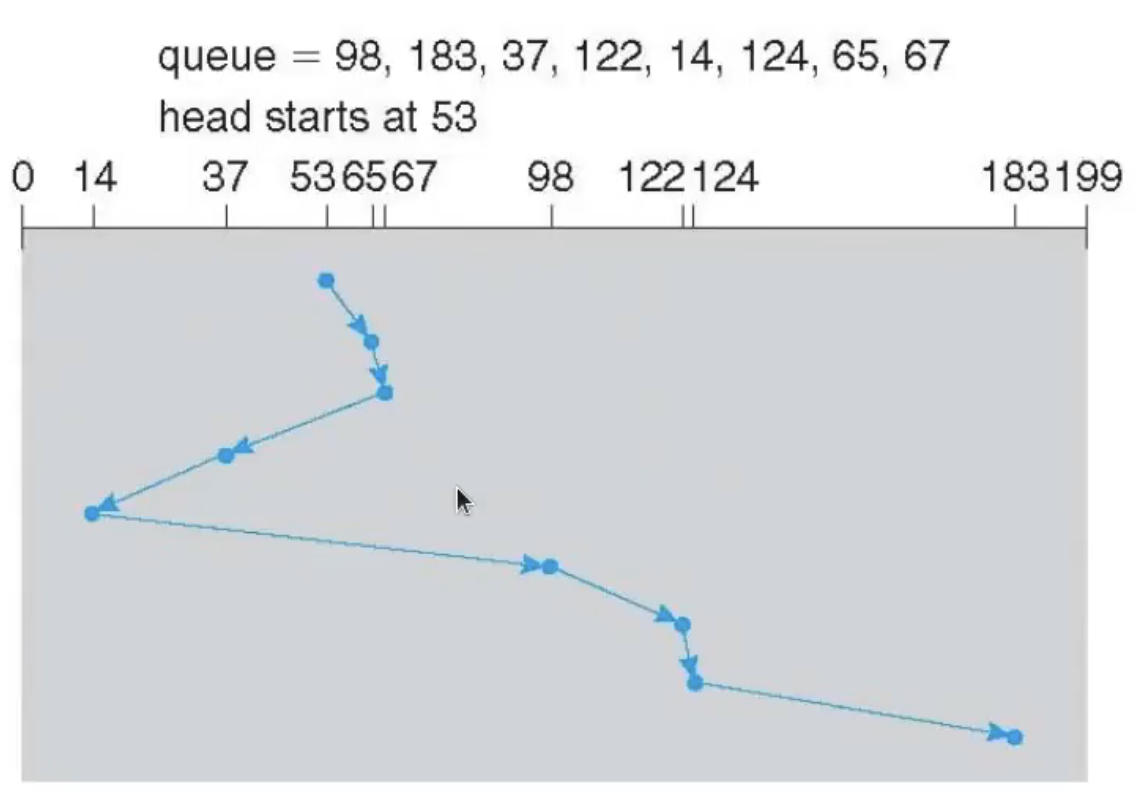
(65-53)+(67-65)+(67-37)+(37-14)+(98-14)+(122-98)+(124-122)+(183-124) = total head movement of 236 cylinders
SCAN
- like an elevator scans to one end until the edge and scans to the other end again in reverse
- 2 directions
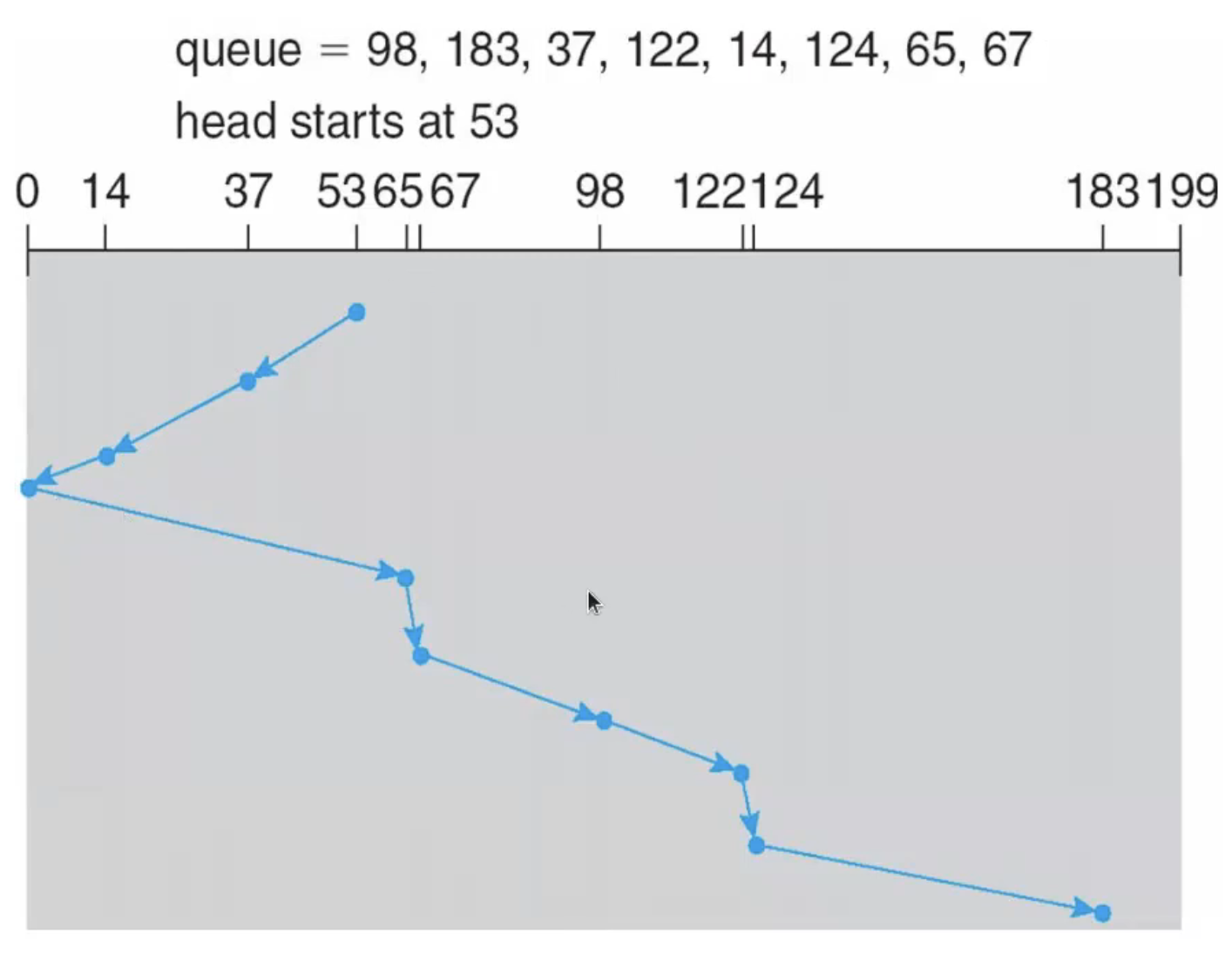
(53-37)+(37-14)+(65-14)+(67-65)+(98-67)+(122-98)+(124-122)+(183-124) = total head movement of 208 cylinders (not counting the head movement to 0?)
CSCAN
- scans until the edge and goes back to the start in case any were missed like a type writer
- 1 direction
FSCAN
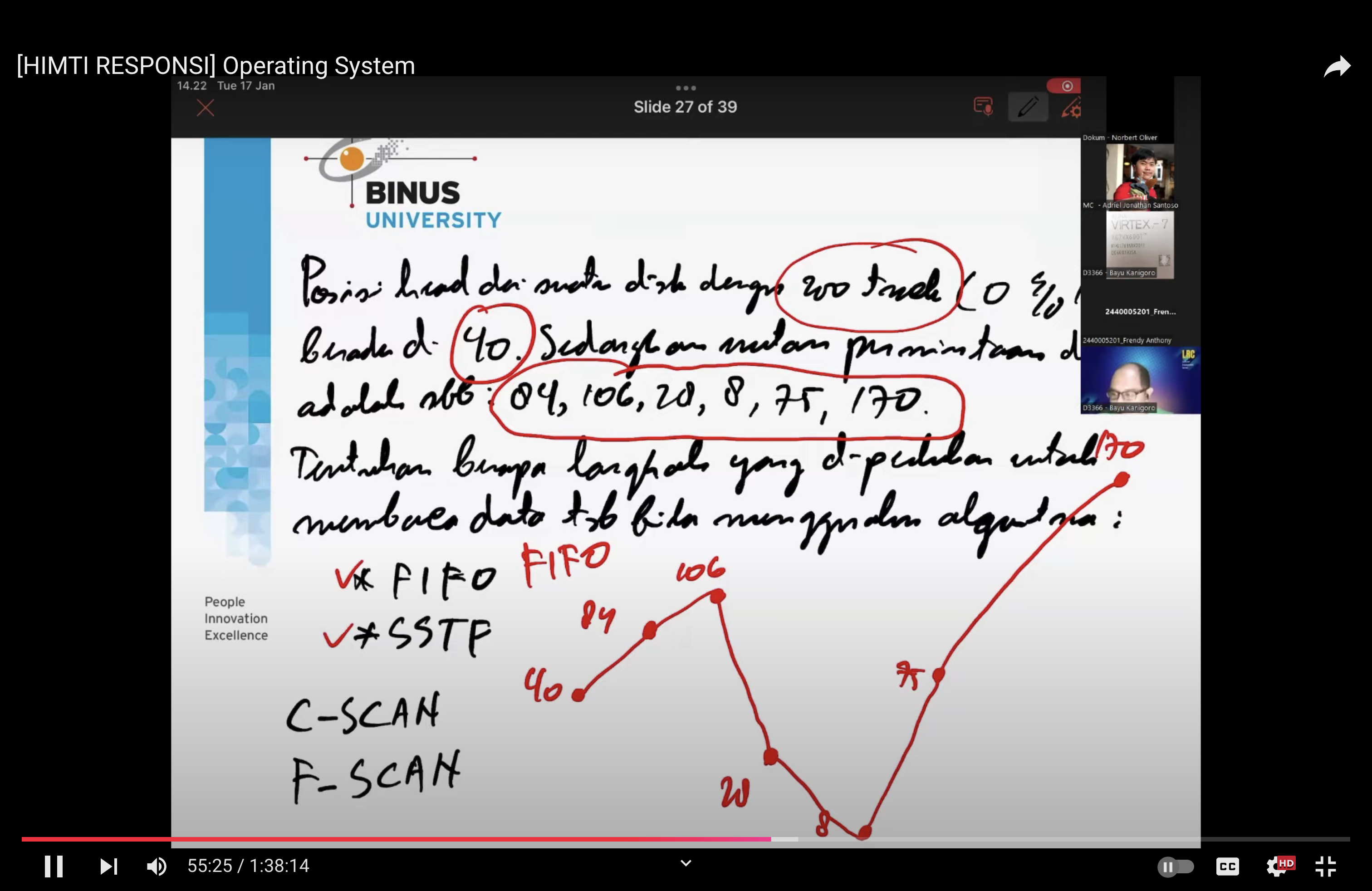
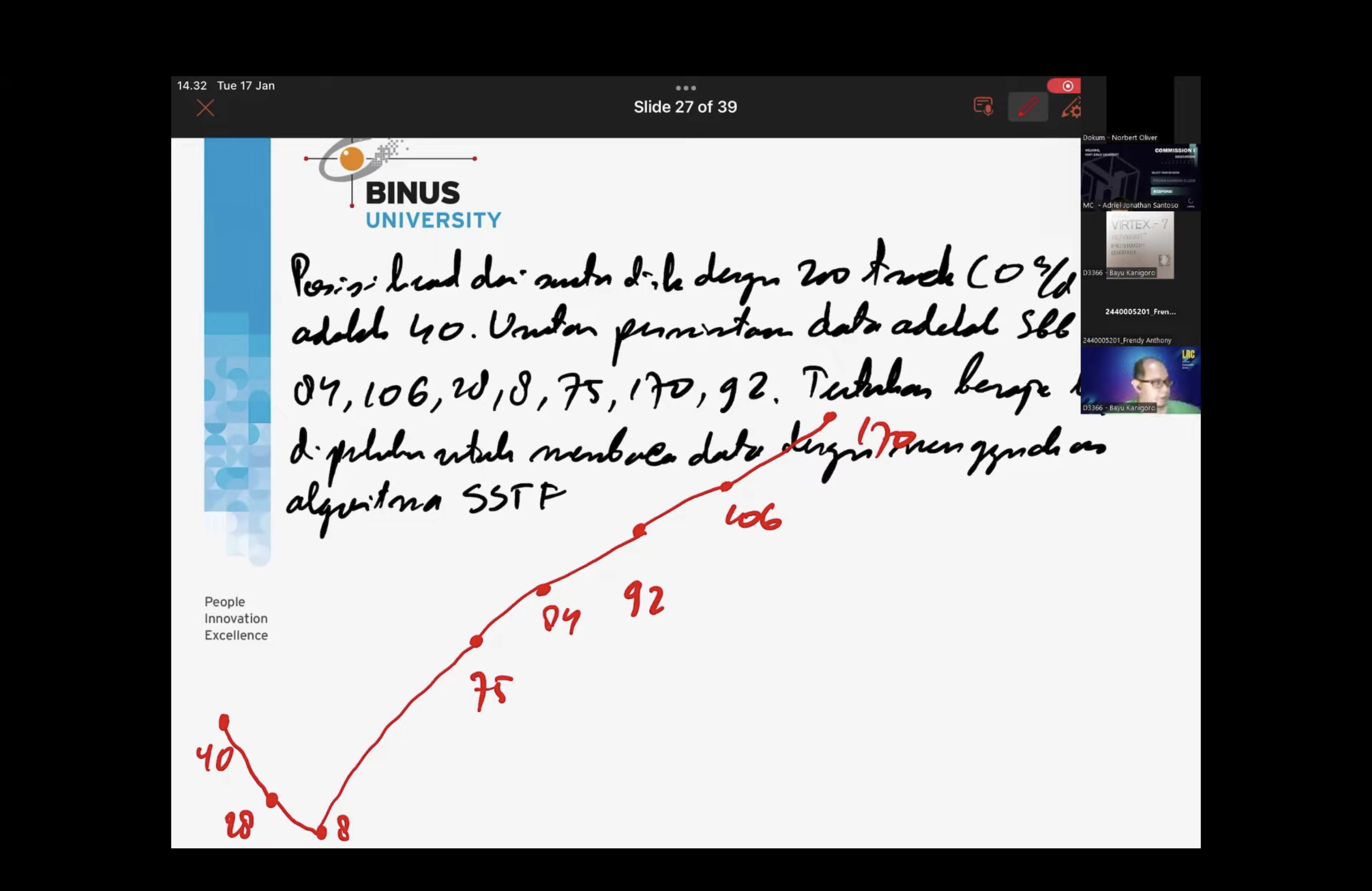
Extra info:
-
Transfer rate
- Rate at which data flow between drive and computer
-
Positioning time (random-access time) consists of
- Seek time
- Time to find the desired cylinder/track
- Rotational Delay
- Time to find the desired sector
- Seek time
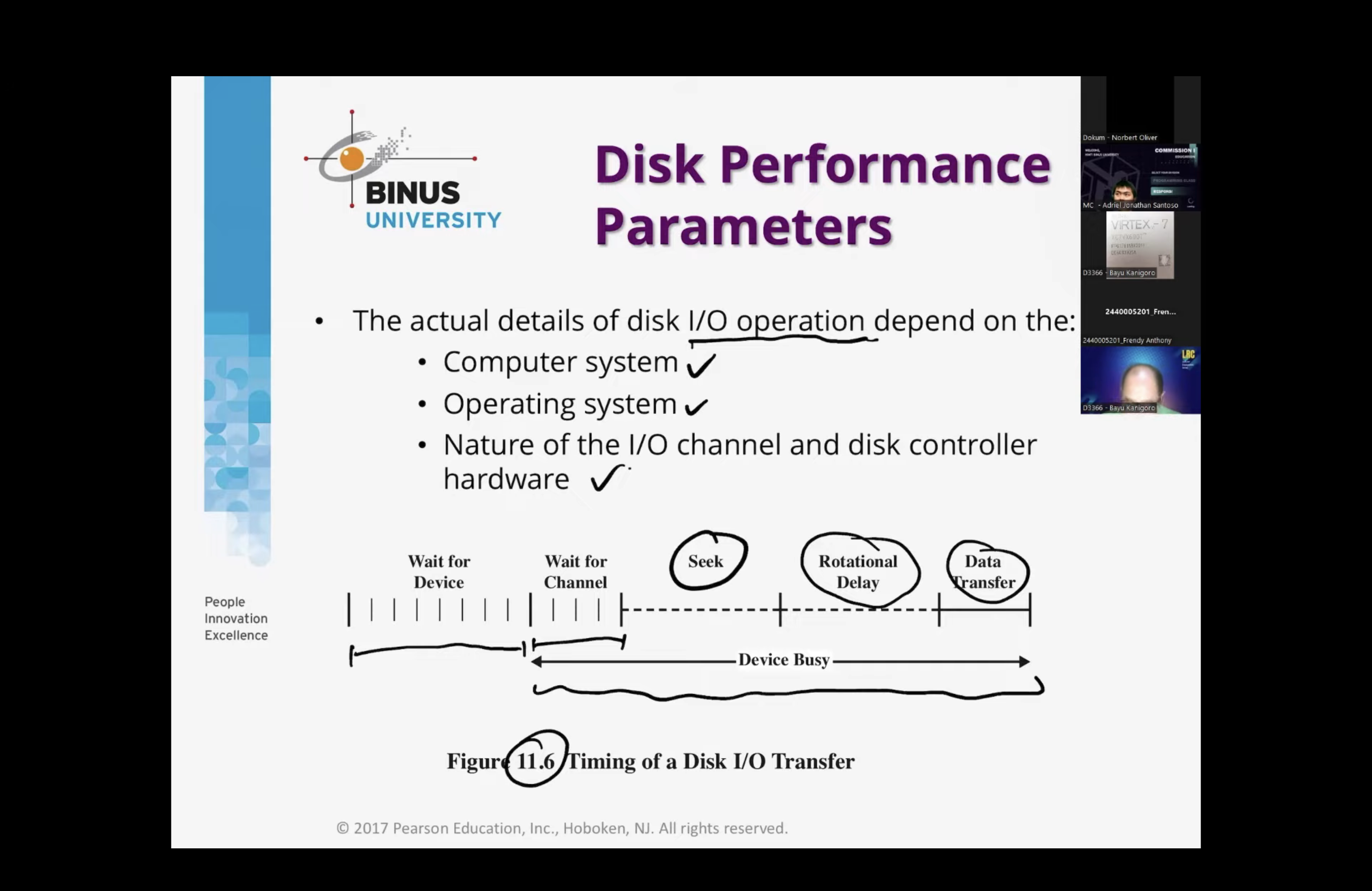
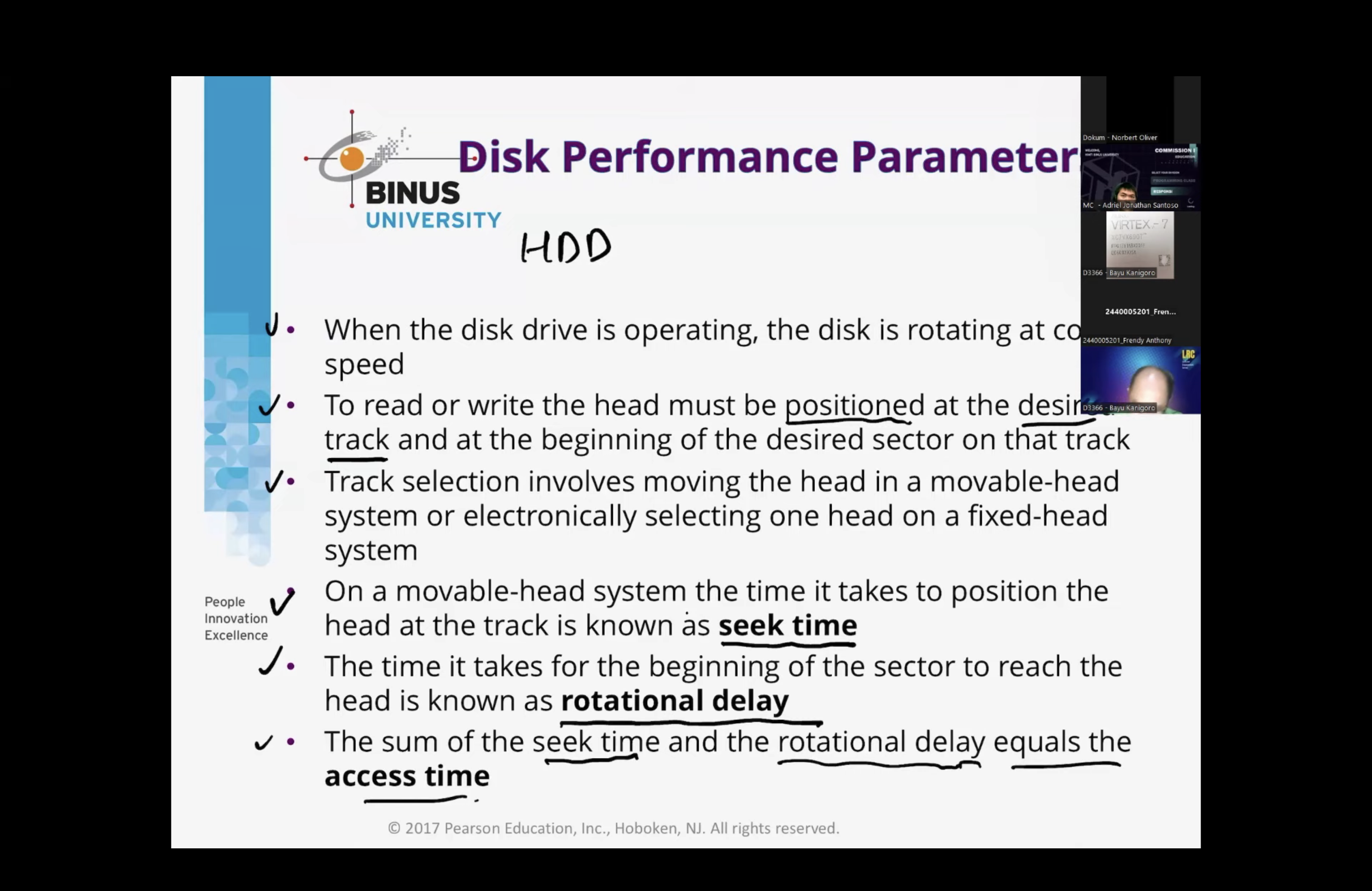
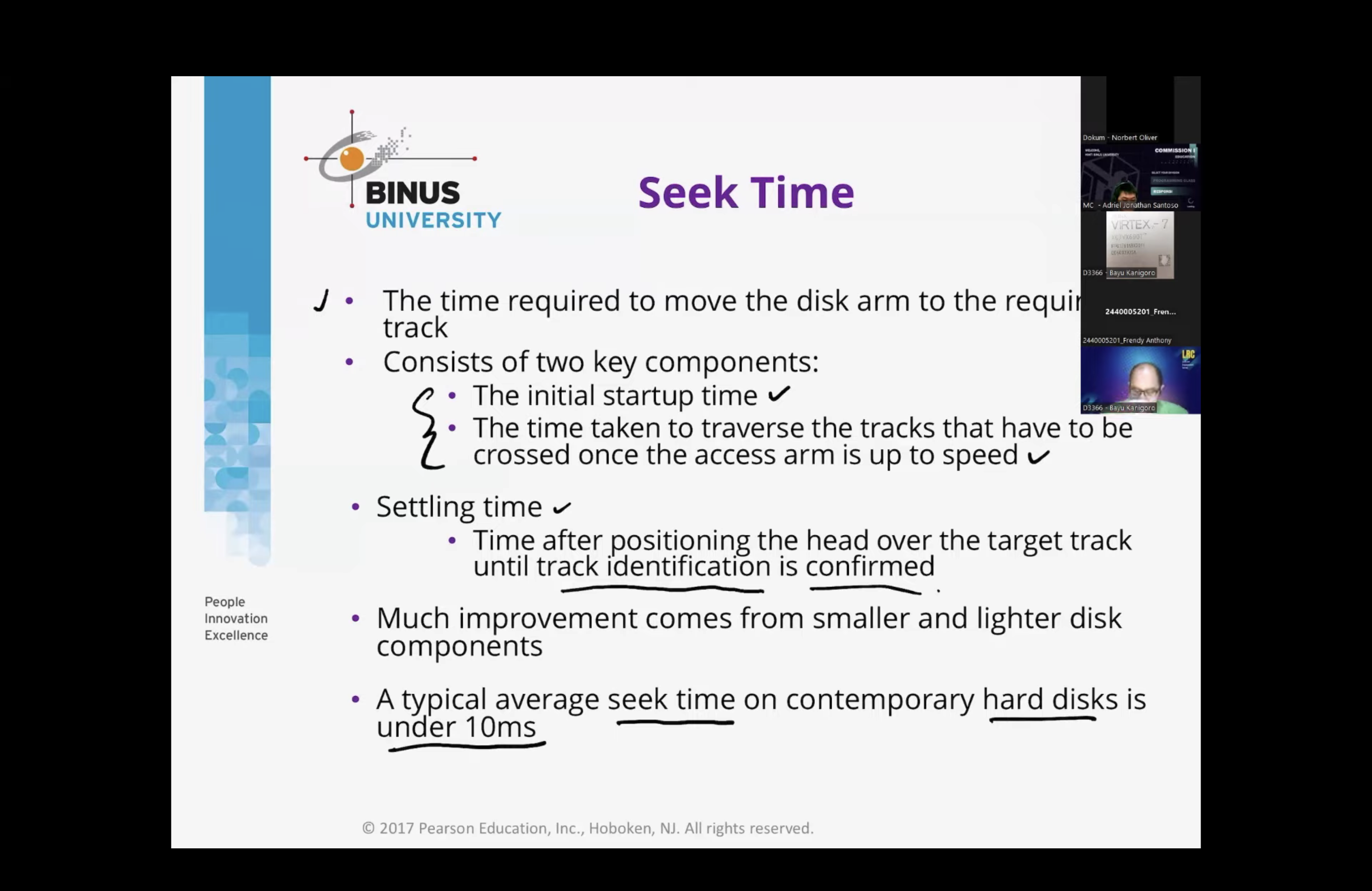
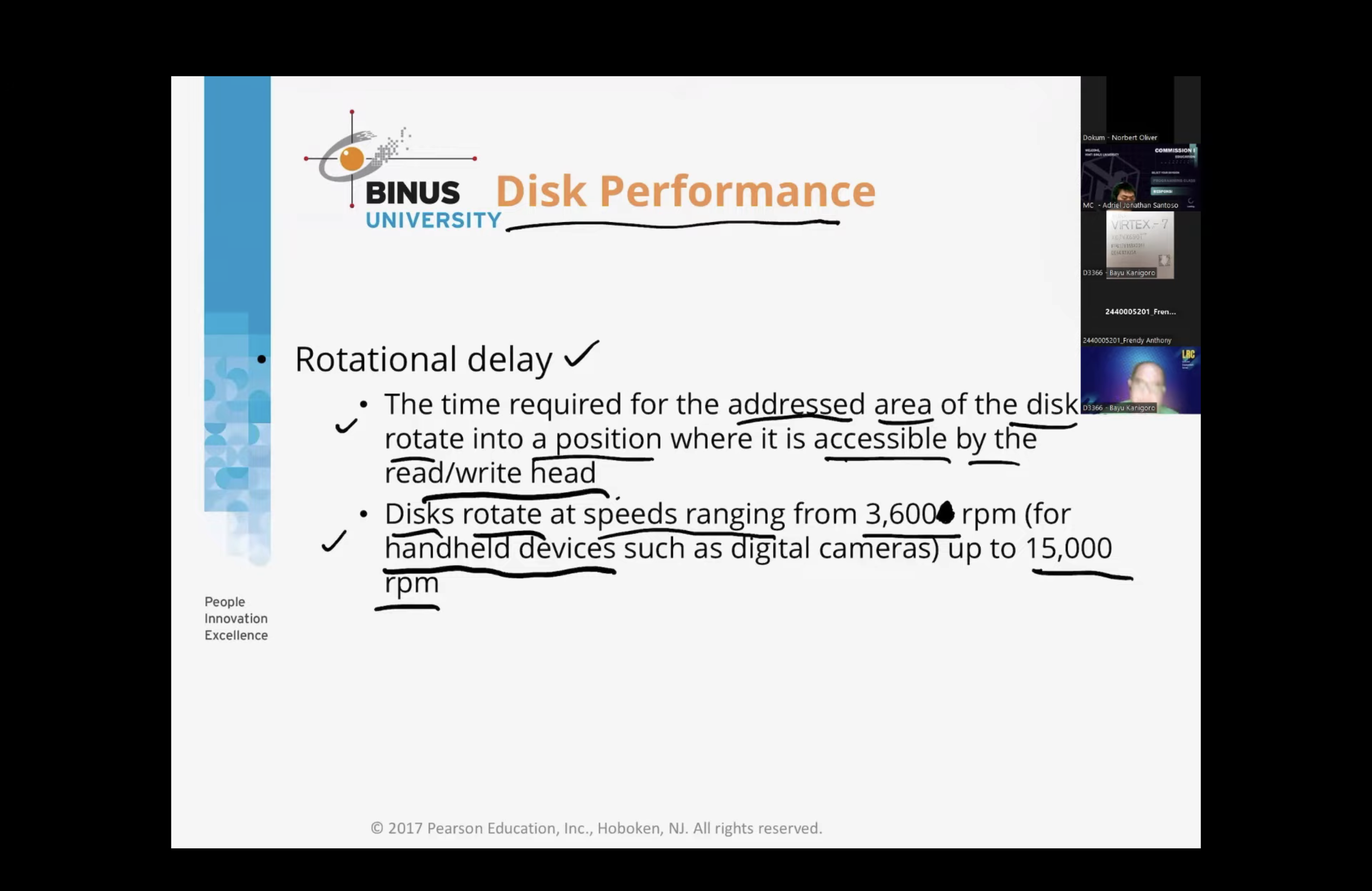

Practice:
- Suppose there is a disk with 100 cylinders numbered 0 to 99. The current position of the head is at 15 and is moving upwards. The following I/O request arrived: 5, 0, 25, 15, 2, 85, 12 and 60. Calculate the number of disk arm / head movements that are required if the disk arm scheduling algorithm used is: i. SSTF (Shortest Seek Time first) ii. FIFO iii. Scan
Answer:
https://youtu.be/8Q95UCTVIVY?list=PLBXapj649rh9UKCBfJEyEUN5Ulvfq1s96&t=1375
- UI
- book
- zulfani
- exercises
- UI
- assignment
- responsi
